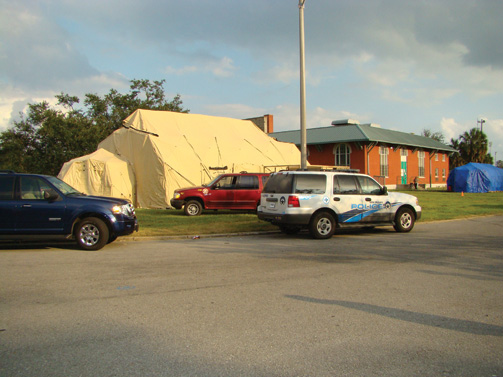When Hurricane Gustav blew ashore around 9:30 am on September 1, 2008 near Cocodrie, Louisiana, a low lying community 72 miles southwest of New Orleans, forecasters feared that it would remain a Category 2 hurricane, blowing winds at over 100mph. But just four hours later, it had dropped to a Category 1 as it steamed inland towards Texas.

Although the storm did not cause the life-changing damage wrought by Katrina three years ago, New Orleans residents were not without obstacles.
In Plaquemines Parish, a levee was in danger of collapse. Roofs were torn from homes, trees toppled and roads flooded. More than one million homes were without power and the extent of any damage to the oil and gas industry was unclear. Residents who stayed behind during the evacuation were encouraged to flee.
Wind-driven water sloshed over the top of the Industrial Canal’s floodwall – the same structure that broke with disastrous consequences during Katrina – and several nearby Ninth Ward streets were flooded with ankle- to knee-deep water.
As part of the City of New Orleans’ Office of Emergency Preparedness response effort, the City deployed Reeves EMS DRASH systems to various parts of the city.
More than 30 displaced residents were housed in a large J Shelter (1,250 square feet) with an accompanying trailer and generator for four days. A six-stall shower system was set up, which allowed at least 300 aid personnel a day to clean offthe grime from their work day.
Plaquemines Parish purchased three Reeves EMS DRASH C shelters, each providing 109 square feet of usable space, to use as point of distribution locations to provide water, supplies and aid to those in need.
A total of 700 kW of power from various DRASH generators were used to provide backup power to fire stations and power to disaster shelters that did not have power.
And this was only for those preparedness efforts related to DRASH.
Wary of repeating the mistakes of Hurricane Katrina, the city ordered mandatory evacuation of the whole of New Orleans commencing on the morning of August 31.
By that afternoon 1.9 million people had evacuated southern Louisiana, 200,000 who were residents of New Orleans, making it the largest evacuation in the history of the state.